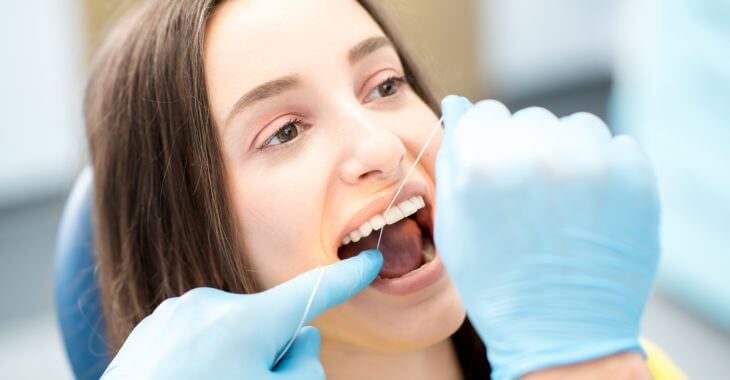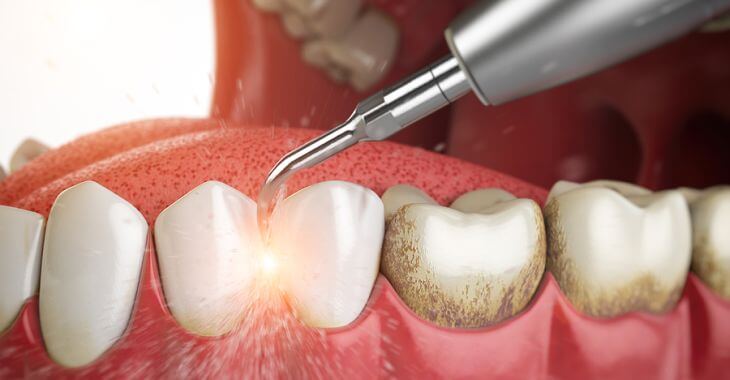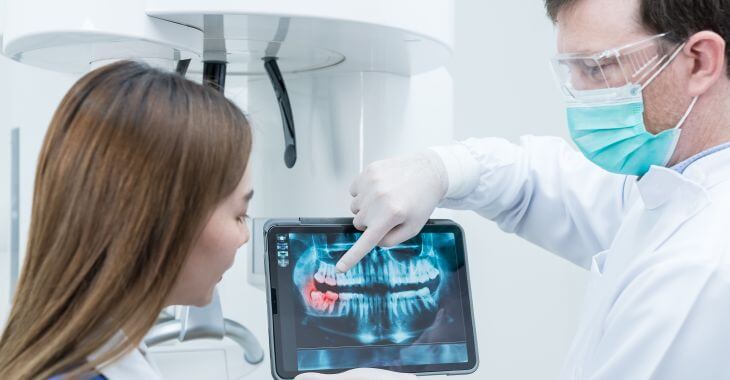How to Get Rid of Calcification on Teeth: Causes, Detriments, Prevention and Treatment

Calcification on teeth, also known as dental calculus or tartar, is a common dental issue caused by the accumulation of mineral deposits on the tooth surface. While calcification may seem harmless at first glance, its presence can lead to various oral health problems if left untreated.
In this article, we will explore the causes of calcium build up on teeth, the detriments it can pose to oral health, effective prevention strategies, and how to get rid of calcification on teeth.
Causes of Calcium Buildup on Teeth
Calcification on teeth occurs when minerals such as calcium and phosphate from saliva combine with food particles and bacteria to form plaque—a sticky, colorless film that adheres to the tooth surface.
Over time, plaque can harden into tartar or dental calculus, which is resistant to brushing and flossing and can only be removed by a dental professional. Factors that contribute to the formation of dental calculus include:
- Poor Oral Hygiene: Inadequate brushing and flossing habits can allow plaque to accumulate on the teeth, providing a breeding ground for bacterial growth and mineral deposition.
- Dietary Habits: Consuming foods and beverages high in sugars and carbohydrates can promote bacterial growth and plaque formation, increasing the risk of calcification on teeth.
- Tobacco Use: Smoking or using tobacco products can contribute to the buildup of plaque and tartar on teeth, as well as increase the risk of gum disease and tooth decay.
- Saliva Composition: Changes in saliva pH or composition can affect its ability to buffer acids and remineralize tooth enamel, leading to an increased risk of calcification.
Detriments of Calcification on Teeth
While dental calculus may initially appear as a harmless yellow or brownish deposit on the teeth, its presence can have significant consequences for oral health. Some detriments of calcification on teeth include:
- Gum Disease: Tartar buildup along the gum line can irritate the gums and lead to inflammation, gingivitis, and eventually periodontal disease if left untreated.
- Tooth Decay: Dental calculus provides a rough surface for plaque and bacteria to adhere to, increasing the risk of tooth decay and cavities.
- Bad Breath: The bacteria present in dental calculus can produce foul-smelling odors, contributing to chronic bad breath or halitosis.
- Tooth Discoloration: Severe calcification on teeth can cause unsightly discoloration or staining, detracting from the appearance of the smile.
Prevention of Calcium Buildup on Teeth
Preventing calcification on teeth is key to maintaining good oral health and avoiding potential complications. Here are some effective prevention strategies:
- Practice Good Oral Hygiene: Brush your teeth at least twice a day with fluoride toothpaste and floss daily to remove plaque and prevent tartar buildup.
- Limit Sugary and Acidic Foods: Minimize consumption of sugary snacks and acidic beverages that can contribute to plaque formation and tooth decay.
- Quit Smoking: If you smoke or use tobacco products, consider quitting to reduce the risk of gum disease and tartar buildup on teeth.
- Regular Dental Cleanings: Schedule routine dental check-ups and professional cleanings at least every six months to remove plaque and tartar buildup that cannot be removed through brushing and flossing alone.
- Use Tartar Control Products: Consider using tartar control toothpaste or mouthwash containing antimicrobial agents to help prevent plaque buildup and tartar formation.
Treatments for Removal of Calcification on Teeth
If calcification has already developed on your teeth, several treatment options are available to remove tartar and restore oral health. Here are some ways to get rid of calcification on teeth:
- Professional Dental Cleaning: A dental hygienist or dentist can remove tartar buildup using specialized instruments during a professional dental cleaning or scaling procedure.
- Ultrasonic Scaling: Ultrasonic scalers use high-frequency vibrations to break up and remove tartar deposits from the teeth, providing a gentle and effective cleaning method.
- Manual Scaling: In some cases, manual scaling instruments such as scalers or curettes may be used to carefully remove tartar buildup from the tooth surfaces.
- Root Planing: For patients with advanced gum disease, root planing may be recommended to smooth the root surfaces of the teeth and remove bacteria and tartar from below the gum line.
- Home Care: Following professional dental cleaning, maintaining good oral hygiene habits at home is essential to prevent future tartar buildup and maintain optimal oral health. However, home care can only help prevent calcium buildup on teeth, not remove it once it is there.
Calcification on teeth can have detrimental effects on oral health if left untreated. By understanding the causes of tartar buildup, implementing effective prevention strategies, and seeking professional dental care as needed, you can reduce the risk of calcification and maintain a healthy, beautiful smile.

If you are concerned about tartar build up on your teeth, schedule a dental appointment for a comprehensive evaluation and personalized treatment recommendations. Your dentist can help you achieve and maintain optimal oral health through preventive home care and professional cleanings.
The information provided on this website, including text, graphics, images, and other materials, is intended solely for informational purposes and should not be used as a substitute for professional medical advice, diagnosis, or treatment.



)